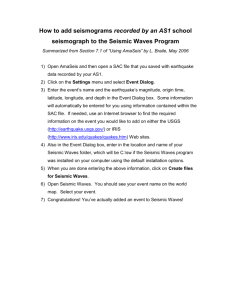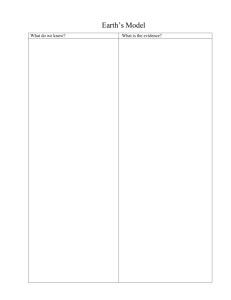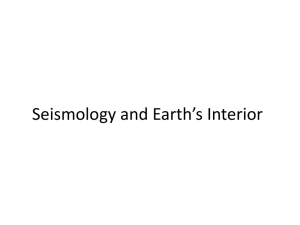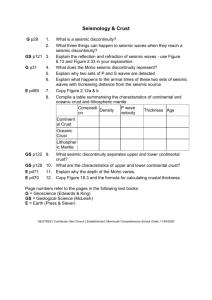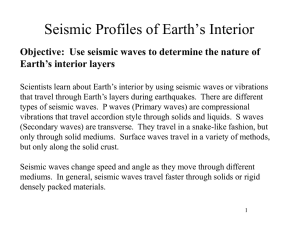GEOL 101
advertisement
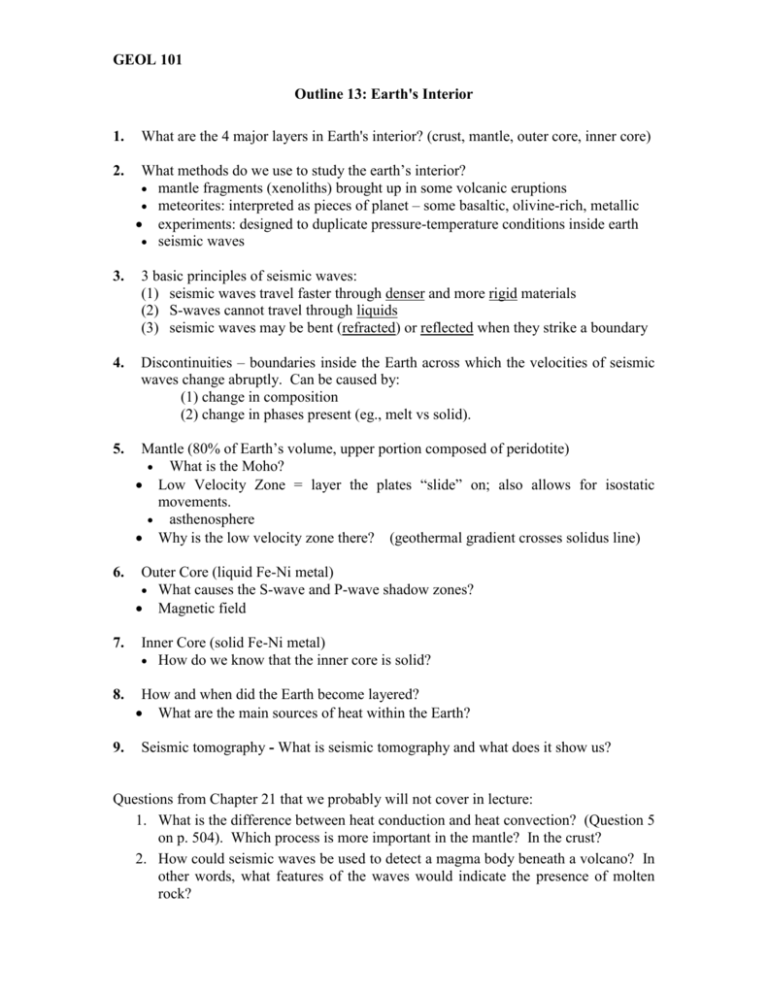
GEOL 101 Outline 13: Earth's Interior 1. 2. What are the 4 major layers in Earth's interior? (crust, mantle, outer core, inner core) What methods do we use to study the earth’s interior? mantle fragments (xenoliths) brought up in some volcanic eruptions meteorites: interpreted as pieces of planet – some basaltic, olivine-rich, metallic experiments: designed to duplicate pressure-temperature conditions inside earth seismic waves 3. 3 basic principles of seismic waves: (1) seismic waves travel faster through denser and more rigid materials (2) S-waves cannot travel through liquids (3) seismic waves may be bent (refracted) or reflected when they strike a boundary 4. Discontinuities – boundaries inside the Earth across which the velocities of seismic waves change abruptly. Can be caused by: (1) change in composition (2) change in phases present (eg., melt vs solid). 5. Mantle (80% of Earth’s volume, upper portion composed of peridotite) What is the Moho? Low Velocity Zone = layer the plates “slide” on; also allows for isostatic movements. asthenosphere Why is the low velocity zone there? (geothermal gradient crosses solidus line) 6. Outer Core (liquid Fe-Ni metal) What causes the S-wave and P-wave shadow zones? Magnetic field 7. 8. 9. Inner Core (solid Fe-Ni metal) How do we know that the inner core is solid? How and when did the Earth become layered? What are the main sources of heat within the Earth? Seismic tomography - What is seismic tomography and what does it show us? Questions from Chapter 21 that we probably will not cover in lecture: 1. What is the difference between heat conduction and heat convection? (Question 5 on p. 504). Which process is more important in the mantle? In the crust? 2. How could seismic waves be used to detect a magma body beneath a volcano? In other words, what features of the waves would indicate the presence of molten rock?

